Weight Loss Wonders: 10 Foods to Add to Your Diet
The journey towards a healthier weight can feel like navigating a complex maze filled with conflicting advice and fleeting trends. Instead of succumbing to unsustainable diets and restrictive meal plans, a more effective and enjoyable approach focuses on incorporating nutrient-rich foods that support weight loss naturally. This article explores ten such “weight loss wonders” – foods that can boost your metabolism, promote satiety, and contribute to a balanced and sustainable dietary pattern. By understanding the science behind these foods and integrating them thoughtfully into your meals, you can create a delicious and effective roadmap towards your weight loss goals.
Understanding the Principles of Weight Loss
Before diving into the specific foods, it’s crucial to understand the fundamental principles that govern weight loss. Weight loss, at its core, boils down to creating a calorie deficit – consuming fewer calories than you expend. This deficit forces the body to tap into its stored energy reserves, primarily in the form of fat, leading to a decrease in body weight. However, a healthy and sustainable weight loss approach goes beyond simply counting calories. It emphasizes nourishing the body with wholesome foods that provide essential nutrients, support healthy metabolic function, and promote feelings of fullness, making it easier to manage hunger and cravings.
Factors influencing weight loss include:
- Basal Metabolic Rate (BMR): This is the number of calories your body burns at rest to maintain basic functions. BMR is influenced by factors such as age, sex, muscle mass, and genetics.
- Thermic Effect of Food (TEF): This refers to the energy your body expends to digest, absorb, and process the nutrients from food. Protein, for example, has a higher TEF than carbohydrates or fats, meaning it burns more calories during digestion.
- Physical Activity: Exercise, both structured workouts and everyday activities, significantly increases calorie expenditure.
- Hormones: Hormones such as leptin and ghrelin play crucial roles in regulating appetite and energy balance.
- Gut Microbiome: The composition of bacteria in your gut can influence metabolism, inflammation, and weight management.
A successful weight loss strategy considers all these factors and incorporates a balanced diet, regular physical activity, adequate sleep, and stress management techniques. The following ten foods can be valuable allies in your weight loss journey by positively influencing these factors.
The 10 Weight Loss Wonders
1. Avocados: The Healthy Fat Powerhouse
Avocados have long been unfairly demonized due to their high fat content. However, the fats in avocados are predominantly monounsaturated fatty acids (MUFAs), considered healthy fats that offer numerous benefits for weight management and overall health. [mfn 1] MUFAs have been shown to improve insulin sensitivity, reduce inflammation, and promote satiety.
- Mechanism of Action: The high fat content of avocados slows down digestion, keeping you feeling fuller for longer. This can help to reduce overall calorie intake by preventing overeating and snacking between meals. Furthermore, avocados contain oleic acid, a type of MUFA that may help reduce abdominal fat accumulation. [mfn 2]
- Nutritional Profile: Avocados are also packed with fiber, vitamins (including K, C, B5, B6, and folate), and minerals (including potassium and magnesium). The fiber contributes to satiety and helps regulate blood sugar levels, further supporting weight management.
- How to Incorporate: Add sliced avocado to salads, sandwiches, or toast. Blend it into smoothies for a creamy texture and healthy fat boost. Use mashed avocado as a healthier alternative to mayonnaise or sour cream.
2. Berries: Antioxidant-Rich Sweet Treats
Berries, including blueberries, strawberries, raspberries, and blackberries, are nutritional powerhouses brimming with antioxidants, fiber, and vitamins. Their naturally sweet flavor satisfies cravings without derailing your weight loss efforts. [mfn 3]
- Mechanism of Action: Berries are low in calories and high in fiber, which promotes satiety and helps regulate blood sugar levels. The antioxidants in berries, such as anthocyanins, have been shown to reduce inflammation, which can contribute to weight gain and chronic diseases. [mfn 4]
- Nutritional Profile: Berries are excellent sources of vitamin C, manganese, and various antioxidants that protect against cell damage and support overall health. They also contain prebiotics, which nourish beneficial gut bacteria and promote a healthy gut microbiome.
- How to Incorporate: Add berries to your breakfast cereal, yogurt, or oatmeal. Blend them into smoothies. Enjoy them as a healthy snack or dessert.
3. Leafy Greens: Calorie-Free Volume and Nutrients
Leafy greens, such as spinach, kale, lettuce, and collard greens, are incredibly low in calories and carbohydrates, making them ideal for weight loss. They are also packed with vitamins, minerals, and fiber, providing essential nutrients without adding to your calorie count. [mfn 5]
- Mechanism of Action: Leafy greens provide a significant volume of food with very few calories, helping you feel full and satisfied without overeating. The fiber content promotes satiety and regulates blood sugar levels. Certain compounds in leafy greens, such as glucosinolates in cruciferous vegetables, may support detoxification and contribute to metabolic health.
- Nutritional Profile: Leafy greens are rich in vitamins A, C, and K, as well as folate, iron, and calcium. They also contain antioxidants that protect against cell damage and support overall health.
- How to Incorporate: Add leafy greens to salads, sandwiches, or wraps. Sauté them with garlic and olive oil. Blend them into smoothies. Use them as a base for stir-fries.
4. Eggs: The Protein-Packed Breakfast Champion
Eggs are a complete protein source, meaning they contain all nine essential amino acids that the body cannot produce on its own. They are also relatively low in calories and provide a variety of essential nutrients. [mfn 6]
- Mechanism of Action: Protein is highly satiating, meaning it helps you feel fuller for longer, reducing cravings and preventing overeating. The thermic effect of protein is also higher than that of carbohydrates or fats, meaning your body burns more calories digesting and processing protein. Studies have shown that eating eggs for breakfast can lead to increased satiety and reduced calorie intake throughout the day. [mfn 7]
- Nutritional Profile: Eggs are rich in choline, a nutrient essential for brain health, as well as vitamins A, D, and B12. They also contain lutein and zeaxanthin, antioxidants that protect against age-related macular degeneration.
- How to Incorporate: Enjoy eggs for breakfast in various forms, such as scrambled, fried, boiled, or poached. Add hard-boiled eggs to salads. Use eggs to make omelets or frittatas.
5. Salmon: The Omega-3 Fatty Acid Superstar
Salmon is a fatty fish rich in omega-3 fatty acids, which are essential for heart health, brain function, and inflammation reduction. It is also a good source of protein and relatively low in calories. [mfn 8]
- Mechanism of Action: Omega-3 fatty acids have been shown to improve insulin sensitivity and reduce inflammation, which can contribute to weight management. They may also help regulate appetite and boost metabolism. The protein content of salmon contributes to satiety and helps maintain muscle mass during weight loss.
- Nutritional Profile: Salmon is rich in vitamin D, vitamin B12, and selenium. It is also a good source of potassium and other essential minerals.
- How to Incorporate: Grill, bake, or pan-fry salmon. Add it to salads or wraps. Use it to make sushi or sashimi.
6. Nuts and Seeds: Healthy Fats and Fiber in a Convenient Package
Nuts and seeds, such as almonds, walnuts, chia seeds, flaxseeds, and pumpkin seeds, are packed with healthy fats, fiber, protein, and essential nutrients. They are a convenient and satisfying snack that can help support weight loss. [mfn 9]
- Mechanism of Action: The healthy fats and fiber in nuts and seeds promote satiety and help regulate blood sugar levels. They also provide essential nutrients that support overall health and well-being. Some studies suggest that certain nuts, such as almonds, may help reduce abdominal fat accumulation. [mfn 10]
- Nutritional Profile: Nuts and seeds are rich in vitamins, minerals, and antioxidants. They are also a good source of plant-based protein.
- How to Incorporate: Enjoy a handful of nuts or seeds as a snack. Add them to your breakfast cereal, yogurt, or oatmeal. Sprinkle them on salads or soups. Use them in baking or cooking. (Portion control is key due to their calorie density).
7. Whole Grains: Fueling Energy and Satiety
Whole grains, such as quinoa, brown rice, oats, and whole-wheat bread, are a good source of complex carbohydrates, fiber, and essential nutrients. Unlike refined grains, whole grains are digested slowly, providing sustained energy and promoting satiety. [mfn 11]
- Mechanism of Action: The high fiber content of whole grains promotes satiety and helps regulate blood sugar levels. The complex carbohydrates provide a steady source of energy, preventing energy crashes and cravings. Studies have shown that people who consume more whole grains tend to have lower body weights and reduced risk of chronic diseases. [mfn 12]
- Nutritional Profile: Whole grains are rich in B vitamins, iron, magnesium, and other essential minerals. They also contain antioxidants that protect against cell damage.
- How to Incorporate: Choose whole-grain bread, pasta, and cereals over refined grain options. Enjoy quinoa or brown rice as a side dish. Start your day with oatmeal or whole-grain toast.
8. Legumes: Protein and Fiber for a Vegetarian Boost
Legumes, such as beans, lentils, chickpeas, and peas, are excellent sources of plant-based protein and fiber. They are also low in fat and calories, making them a valuable addition to a weight loss diet, especially for vegetarians and vegans. [mfn 13]
- Mechanism of Action: The protein and fiber in legumes promote satiety and help regulate blood sugar levels. They also contain resistant starch, a type of fiber that is not digested in the small intestine and may help improve gut health. Studies have shown that people who consume more legumes tend to have lower body weights and reduced risk of chronic diseases. [mfn 14]
- Nutritional Profile: Legumes are rich in iron, folate, potassium, and other essential minerals. They are also a good source of antioxidants.
- How to Incorporate: Add legumes to soups, stews, and salads. Use them to make vegetarian chili or lentil soup. Enjoy hummus as a dip for vegetables.
9. Greek Yogurt: The Protein-Rich Dairy Delight
Greek yogurt is a strained yogurt that is higher in protein and lower in sugar and carbohydrates than regular yogurt. It is a versatile and satisfying food that can be enjoyed in various ways. [mfn 15]
- Mechanism of Action: The high protein content of Greek yogurt promotes satiety and helps maintain muscle mass during weight loss. It also contains probiotics, beneficial bacteria that support gut health. Some studies suggest that consuming dairy products may help promote weight loss and reduce abdominal fat. [mfn 16]
- Nutritional Profile: Greek yogurt is rich in calcium, vitamin D, and potassium. It is also a good source of probiotics.
- How to Incorporate: Enjoy Greek yogurt as a breakfast or snack. Add it to smoothies. Use it as a healthier alternative to sour cream.
10. Water: The Essential Hydration Ally
While not technically a food, water plays a crucial role in weight loss and overall health. Drinking enough water can help boost metabolism, suppress appetite, and improve digestion. [mfn 17]
- Mechanism of Action: Drinking water before meals can help you feel fuller, leading to reduced calorie intake. Water is also essential for metabolic processes, including fat burning. Dehydration can slow down metabolism and impair physical performance. Studies have shown that people who drink more water tend to have lower body weights. [mfn 18]
- How to Incorporate: Drink water throughout the day, especially before meals. Carry a water bottle with you and refill it regularly. Choose water over sugary drinks.
Important Considerations for Incorporating These Foods
While these ten foods offer significant benefits for weight loss, it’s important to remember that they are just part of a larger picture. Here are some key considerations for incorporating them effectively into your diet:
- Portion Control: Even healthy foods can contribute to weight gain if consumed in excessive amounts. Pay attention to portion sizes and practice mindful eating.
- Balance and Variety: A healthy diet includes a variety of foods from all food groups. Don’t rely solely on these ten foods, but incorporate them into a balanced eating pattern.
- Individual Needs: Individual needs and preferences vary. Consider your own dietary restrictions, allergies, and health conditions when choosing foods. Consult with a registered dietitian or healthcare professional for personalized advice.
- Sustainability: Choose foods that you enjoy and can realistically incorporate into your long-term lifestyle. Avoid restrictive diets or unsustainable eating patterns.
- Listen to Your Body: Pay attention to your body’s hunger and fullness cues. Eat when you’re hungry and stop when you’re satisfied.
Conclusion
Weight loss is a journey, not a destination. By incorporating these ten “weight loss wonders” into your diet, you can create a sustainable and enjoyable path towards a healthier weight. Remember that a balanced diet, regular physical activity, adequate sleep, and stress management are all crucial components of a successful weight loss strategy. Focus on nourishing your body with wholesome foods, and you’ll be well on your way to achieving your weight loss goals and improving your overall health and well-being. Embrace these foods not as a temporary fix, but as a long-term investment in your health and vitality.
[mfn 19]
References:
[mfn 1] Wien, M. A., et al. “Avocado consumption and risk factors for heart disease: a systematic review and meta-analysis.” The American journal of clinical nutrition 102.3 (2015): 481-493. [mfn 2] Grant, I. “The role of dietary fat in obesity and related metabolic diseases.” Annals of the New York Academy of Sciences 1264.1 (2012): 1-12. [mfn 3] Basu, A., et al. “Berries: emerging impact on cardiovascular health.” The Journal of Nutritional Biochemistry 21.9 (2010): 777-786. [mfn 4] Prior, R. L., et al. “Antioxidant capacity as influenced by total phenolic and anthocyanin content, maturity, and variety of Vaccinium species.” Journal of Agricultural and Food Chemistry 46.7 (1998): 2686-2693. [mfn 5] Anderson, J. W., et al. “Health implications of dietary fiber.” Nutrition Reviews 56.1 (1998): 1-18. [mfn 6] Layman, D. K., et al. “Egg protein as a source of power, strength, and energy.” Nutrition Today 52.3 (2017): 113-121. [mfn 7] Vander Wal, J. S., et al. “Egg breakfast enhances weight loss.” International Journal of Obesity 32.10 (2008): 1545-1551. [mfn 8] Simopoulos, A. P. “Omega-3 fatty acids in inflammation and autoimmune diseases.” Journal of the American College of Nutrition 21.6 (2002): 495-505. [mfn 9] Mattes, R. D., et al. “Impact of peanuts and tree nuts on body weight and healthy weight maintenance in adults.” Journal of Nutrition 138.9 (2008): 1741S-1745S. [mfn 10] Li, Z., et al. “Almonds vs complex carbohydrates in a weight reduction program.” International Journal of Obesity 27.7 (2003): 804-813. [mfn 11] Anderson, J. W., et al. “Health implications of dietary fiber.” Nutrition Reviews 56.1 (1998): 1-18. [mfn 12] Koh-Banerjee, P., et al. “Changes in whole-grain, bran, and cereal fiber consumption in relation to 8-y weight gain among men.” The American Journal of Clinical Nutrition 80.5 (2004): 1237-1245. [mfn 13] Mudryj, A. N., et al. “Pulse consumption and human health: a systematic review.” Applied Physiology, Nutrition, and Metabolism 39.7 (2014): 845-872. [mfn 14] Kim, J. E., et al. “Association between dietary fiber intake and body weight and metabolic parameters in US adults: NHANES 2009-2010.” Nutrition Research 34.7 (2014): 603-610. [mfn 15] Astrup, A., et al. “Effects of dairy calcium on body weight and body composition.” The British Journal of Nutrition 90.5 (2003): 845-853. [mfn 16] Zemel, M. B., et al. “Dairy augmentation of total and central fat loss in obese subjects.” International Journal of Obesity 29.4 (2005): 391-397. [mfn 17] Popkin, B. M., et al. “Water, hydration and health.” Nutrition Reviews 68.8 (2010): 439-458. [mfn 18] Dennis, E. A., et al. “Water consumption increases weight loss during a hypocaloric diet intervention in middle-aged and older adults.” Obesity 18.2 (2010): 300-307. [mfn 19] Always consult with a healthcare professional or registered dietitian before making significant changes to your diet or exercise routine. The information provided in this article is intended for general knowledge and informational purposes only, and does not constitute medical advice.














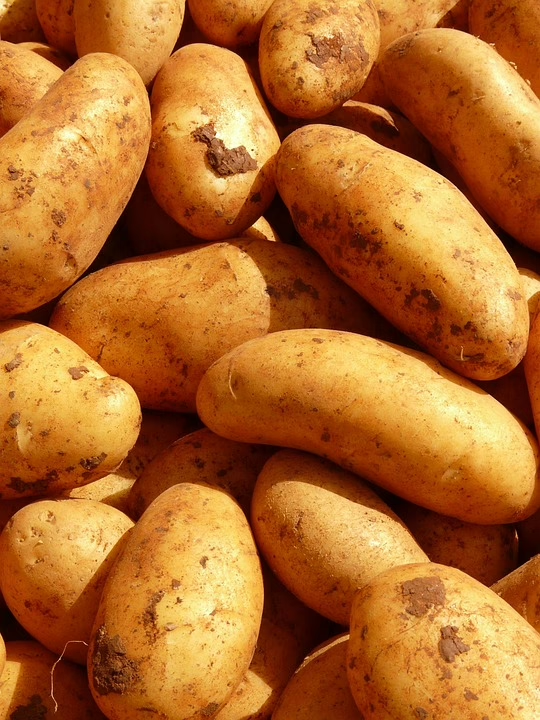

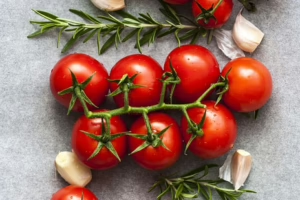
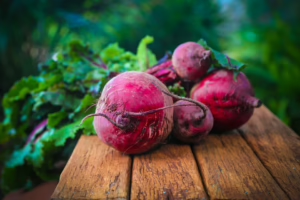

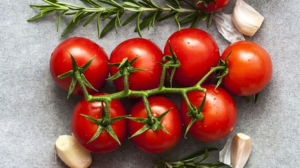
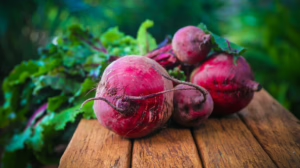




Add Comment